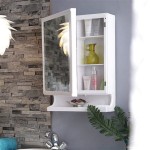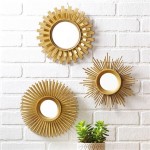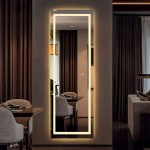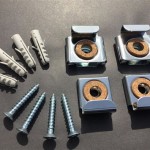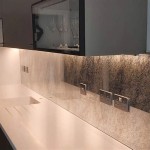Can You Hang a Mirror on Plasterboard?
Hanging a mirror on plasterboard walls, a common feature in modern homes, presents specific challenges due to the material's composition. Plasterboard, also known as drywall or gypsum board, offers a smooth surface but lacks the inherent strength of solid walls. This article addresses the complexities of securely hanging mirrors on plasterboard, outlining appropriate methods and essential considerations.
Key Considerations for Hanging Mirrors on Plasterboard
Several factors influence the best approach for hanging a mirror on plasterboard: the weight and size of the mirror, the type of wall fixing required, and the location of wall studs.
Understanding Plasterboard and Its Limitations
Plasterboard consists of a gypsum core sandwiched between two layers of paper. While convenient and cost-effective, its structure makes it susceptible to damage from excessive weight or incorrectly installed fixings. Heavy objects, like large mirrors, require specialized hanging methods to prevent pulling away from the wall.
Locating Wall Studs
Wall studs, typically wooden or metal supports within the wall framing, provide the most secure anchoring points for heavy items. Locating studs is crucial for maximizing the holding power of the fixings. Several methods can be used:
- Electronic stud finders: These devices use electronic signals to detect changes in wall density, indicating the presence of a stud.
- Tapping: Gently tapping along the wall and listening for a change in sound from hollow to solid can help pinpoint stud locations.
- Measuring: Studs are often spaced at regular intervals, typically 16 or 24 inches apart. Measuring from a corner or a known stud location can help estimate the position of others.
Hanging Lightweight Mirrors
For smaller, lighter mirrors, specialized plasterboard fixings offer sufficient support. These fixings are designed to grip the plasterboard firmly, distributing the weight and minimizing the risk of damage. Some common options include:
- Plasterboard anchors: These expand behind the wall surface, creating a secure grip.
- Self-drilling plasterboard fixings: These combine a drill bit and screw, allowing for quick and easy installation.
- Adhesive hooks: For very lightweight mirrors, specialized adhesive hooks can provide a damage-free hanging solution.
Hanging Heavy Mirrors
Heavier mirrors necessitate more robust fixing methods to ensure stability and prevent accidents. Utilizing wall studs is highly recommended whenever possible.
- Screws directly into studs: This offers the strongest possible fixing, directly anchoring the mirror to the structural framework of the wall.
- Toggle bolts: For situations where studs are not accessible, toggle bolts provide a heavy-duty alternative. These bolts use spring-loaded wings that expand behind the plasterboard, creating a strong hold.
- Heavy-duty plasterboard anchors: Specialized anchors designed for heavier loads can also be used, although these offer less holding power than screws into studs or toggle bolts.
Choosing the Right Mirror Hanging Hardware
The type of hanging hardware on the back of the mirror will influence the fixing method. D-rings, wire, and keyhole slots each require different approaches for secure attachment.
Proper Installation Techniques
Regardless of the chosen fixing method, careful installation is critical for a secure and lasting result. Key steps include:
- Accurate measurements: Precisely measure the mirror and mark the desired location on the wall, ensuring it is level.
- Pre-drilling pilot holes: Pre-drilling helps prevent the plasterboard from cracking and ensures accurate placement of fixings.
- Using the correct tools: Employing appropriate screwdrivers and drill bits helps prevent damage to the fixings and the wall.
Safety Precautions
Safety should always be a primary concern when hanging mirrors, especially larger or heavier ones. Some important precautions include:
- Wearing appropriate safety gear: Eye protection and gloves should be worn during installation.
- Enlisting help: Lifting heavy mirrors can be challenging and should be done with assistance to prevent injuries and damage to the mirror or wall.
- Checking fixings regularly: Periodically inspect the fixings to ensure they remain secure and address any signs of loosening or damage promptly.
Alternative Hanging Methods
In certain situations, traditional hanging methods may not be suitable. Alternative solutions, such as using adhesive strips specifically designed for mirrors or employing specialized mirror mounting systems, can be considered depending on the mirror's size and weight.

Hang A Mirror On Plasterboard Wall Soraya Interiors

How To Hang A Mirror On Plasterboard Wall Soraya Interiors

Gripit How To Hang A Mirror Onto Plasterboard Wall

How To Hang A Heavy Picture On Plasterboard Wall
How To Hang A 100 Pound Mirror On Drywall Quora

Gripit How To Hang A Mirror Onto Plasterboard Wall

How To Hang A Very Heavy Picture Or Mirror The Best

How To Hang A Large Or Heavy Mirror

Hanging A Mirror On Plasterboard Wall Howto

How To Hang Items On A Plasterboard Wall



